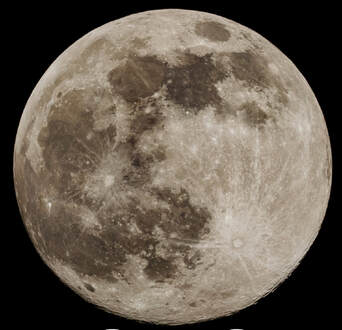MOON
(Ko’komiki’somm)
|
The Moon (Ko’komiki’somm) is the only large celestial body orbiting the Earth. It rotates once per monthly orbit, so we always see the same side of it. It has two main types of terrain: lighter regions called highlands and darker lava plains called maria. Both are scattered with thousands of craters. Tycho crater is easily visible in the southern highlands. Water ice has been discovered in deeply shaded craters near its poles. The Moon was the first destination visited by astronauts from the Earth!
|

